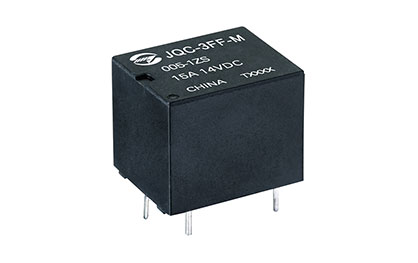
Standard automotive relays can handle high-current loads and provide reliable switching of electrical devices in a vehicle's electrical system. They can help prevent damage to other electrical components and improve the overall performance of the electrical system.

Headlights: Relays are commonly used to control the headlights of a vehicle, allowing them to be turned on and off with a switch.
Fans: Cooling fans in a vehicle's radiator are often controlled by relays to prevent the engine from overheating.
Wipers: Relays can be used to control the wiper motor in a vehicle's windshield wipers.
Fuel pump: The fuel pump in a vehicle is typically controlled by a relay to ensure that it operates only when the engine is running.
Horn: Relays are used to control the horn in a vehicle, allowing it to be activated with a button on the steering wheel.
Starter: The starter motor in a vehicle is typically controlled by a relay to ensure that it operates only when the ignition key is turned to the "start" position.
Air conditioning: Relays are used to control the compressor in a vehicle's air conditioning system, allowing it to turn on and off as needed.

Contact arrangement: The contact arrangement of the relay should match the requirements of the device being controlled. For example, a DPDT relay may be required if the device requires both normally open and normally closed contacts.
Current rating: The relay should be rated to handle the current required by the device being controlled. It is important to ensure that the relay is not underrated, as this can lead to premature failure and potentially dangerous conditions.
Coil voltage: The coil voltage of the relay should match the control voltage available in the vehicle's electrical system. Common coil voltages include 12V and 24V.
Switching speed: The switching speed of the relay should be sufficient for the application. For example, if the device being controlled requires fast switching, a relay with a fast response time may be needed.
Environment: Consider the environment in which the relay will be used, as this can affect its performance and lifespan. If the relay will be used in harsh conditions, such as extreme temperatures or high levels of vibration, a ruggedized or sealed relay may be needed.
Cost: As with any component, the cost of the relay should be taken into account, and a balance struck between performance and budget.
Email:
lilian@zettlernb.comCall Us:
+86-574-62502203Address:
No. 5, Shuntai Road, Yangming Industrial Zone, Yuyao City, Zhejiang Province